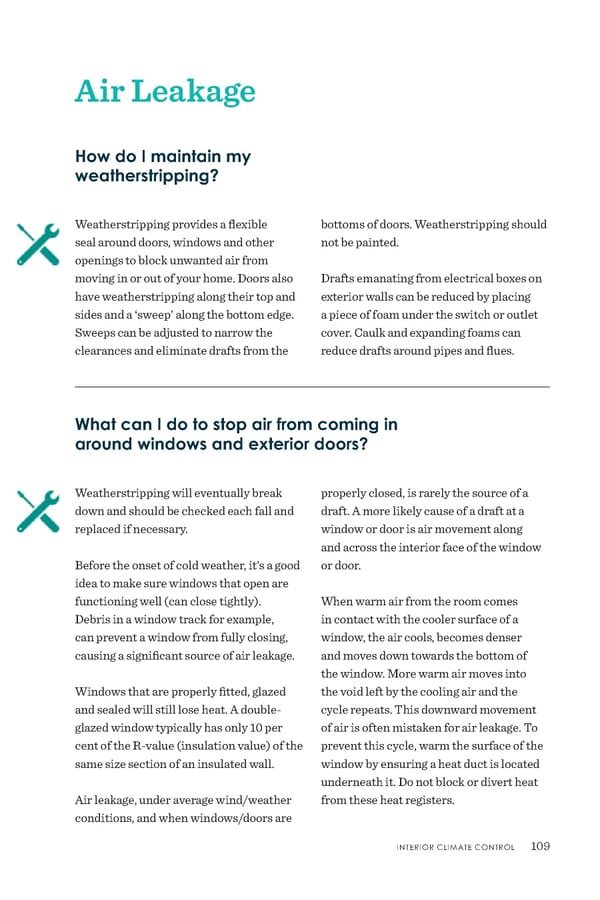Weatherstripping provides a flexible seal around doors, windows and other openings to block unwanted air from moving in or out of your home. Doors also have weatherstripping along their top and sides and a ‘sweep’ along the bottom edge. Sweeps can be adjusted to narrow the clearances and eliminate drafts from the Weatherstripping will eventually break down and should be checked each fall and replaced if necessary. Before the onset of cold weather, it’s a good idea to make sure windows that open are functioning well (can close tightly). Debris in a window track for example, can prevent a window from fully closing, causing a significant source of air leakage. Windows that are properly fitted, glazed and sealed will still lose heat. A double- glazed window typically has only 10 per cent of the R-value (insulation value) of the same size section of an insulated wall. Air leakage, under average wind/weather conditions, and when windows/doors are Air Leakage bottoms of doors. Weatherstripping should not be painted. Drafts emanating from electrical boxes on exterior walls can be reduced by placing a piece of foam under the switch or outlet cover. Caulk and expanding foams can reduce drafts around pipes and flues. properly closed, is rarely the source of a draft. A more likely cause of a draft at a window or door is air movement along and across the interior face of the window or door. When warm air from the room comes in contact with the cooler surface of a window, the air cools, becomes denser and moves down towards the bottom of the window. More warm air moves into the void left by the cooling air and the cycle repeats. This downward movement of air is often mistaken for air leakage. To prevent this cycle, warm the surface of the window by ensuring a heat duct is located underneath it. Do not block or divert heat from these heat registers. How do I maintain my weatherstripping? What can I do to stop air from coming in around windows and exterior doors? INTERIOR CLIMATE CONTROL 109
 ANHWP Care & Maintenance Guide 2022 Page 110 Page 112
ANHWP Care & Maintenance Guide 2022 Page 110 Page 112